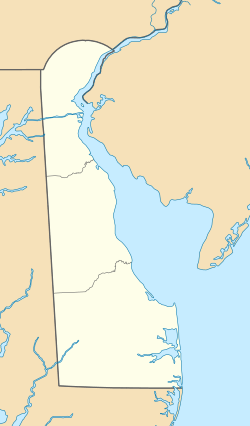Greenbank, Delaware facts for kids
Quick facts for kids
Greenbank, Delaware
|
|
|---|---|
| Country | United States |
| State | Delaware |
| County | New Castle |
| Elevation | 105 ft (32 m) |
| Time zone | UTC-5 (Eastern (EST)) |
| • Summer (DST) | UTC-4 (EDT) |
| ZIP code |
19808
|
| Area code(s) | 302 |
| GNIS feature ID | 216915 |
Greenbank is a small place in Delaware, United States. It's not a city or town with its own government. Instead, it's called an unincorporated community. This means it's part of a larger county, which is New Castle County, Delaware. Greenbank is located west of a bigger city called Wilmington. You can find it where two roads meet: Delaware Route 41 and Greenbank Road.
Contents
Greenbank, Delaware: A Historic Spot
Greenbank might be small, but it has some cool history! Even though it's its own place, people who live there often use Wilmington's ZIP code, which is 19808. Sometimes, locals even say they live in "Wilmington."
Exploring Greenbank's Past
Greenbank is home to several important historical places. These spots tell stories about what life was like long ago.
The Wilmington and Western Railroad
One exciting landmark is the Wilmington and Western Railroad. This railroad runs special tourist trains. It uses old tracks that used to be part of the Baltimore and Ohio Railroad. You can ride these trains between Greenbank and another town called Hockessin. It's a fun way to see the area!
The Greenbank Historic Area
The Greenbank Historic Area is a special part of Greenbank. It includes a few old buildings that have been preserved.
The Greenbank Mill
The Greenbank Mill is a very old building. It was first built in 1790. Later, in 1812, it was made even bigger. Mills like this were important for grinding grain into flour.
Robert Phillips House
The Robert Phillips House is another historic home in Greenbank. It was built a long, long time ago, around 1783. Imagine living in a house that old!
W.G. Phillips House
The W.G. Phillips House was once the home of the person who owned the mill. It was built in the early 1820s. This house gives us a peek into the lives of people who worked at the mill centuries ago.



